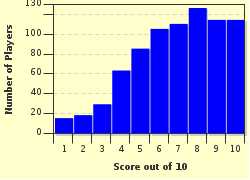Quiz Answer Key and Fun Facts
1. The young mathematician is presented with this problem:
(13 + 7) x (5 - 3) / 4 x (1 + 1) =
Which operation would the young mathematician do first?
2. The young math student wants to learn more. He proceeds with his lessons. One of the most basic properties of math is demonstrated here. What is it called?
2 + 3 = 3 + 2
3. The young student is taught another basic, yet important, property of mathematic operations, and it's demonstrated below. Which property is it?
(5 + 2) + 7 = 5 + (2 + 7)
4. Which mathematical property is demonstrated below?
3 + 0 = 3
5. Which property of math is the young student learning with the following equation?
3 x (4 + 7) = (3 x 4) + (3 x 7)
6. By convention, what is the correct order of operation for the following equation, written as such?
5 + 2 x 8 / 4 - 3 =
7. Which of the following DOES NOT indicate multiplication of the number 4 and the variable, 'Y'?
8. In mathematics, what is a binary operation?
9. When multiplying two negative numbers, what kind of number does one always get for an answer?
10. Generally speaking, dividing some non-zero number by zero yields what result?
Source: Author
mike32768
This quiz was reviewed by FunTrivia editor
crisw before going online.
Any errors found in FunTrivia content are routinely corrected through our feedback system.

